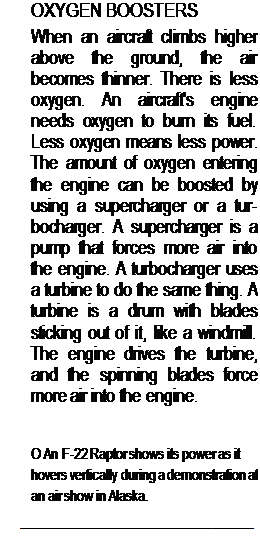Radial and Inline Engines
After World War I, other types of engines began to replace the rotary engine. One of these was the radial engine. A radial engine looks like a rotary, but the radial engine’s cylinders do not spin.
Radial engines were made smoother and more powerful by adding more

 |
 |
cylinders. The most popular rotary engines of the time had nine cylinders, but the biggest radial engines used in aircraft had up to twenty-eight cylinders. Big radial engines caused a lot of air resistance, or drag. The drag was reduced by fitting a streamlined cover, called a cowling, over the engine to deflect air around it.
Radial engines were popular until the 1940s, when there was another change in aircraft design. Designers wanted to create faster, more streamlined planes, so they needed a slimmer engine than the radial to fit inside the slender nose of the aircraft. They chose the inline engine. Its cylinders are in a straight line, like a row of bottles. Bigger inline engines had two rows of cylinders meeting at the bottom, forming the shape of a letter V. An inline engine with two rows of six cylinders—twelve cylinders in all—is called a V-12.
When World War II began in 1939, fighters were powered by radial engines. By the end of the war in 1945, faster fighters such as the P-51 Mustang and the Spitfire were using V-12 engines. Radial engines continued to be used by bigger, slower bombers and airliners.










